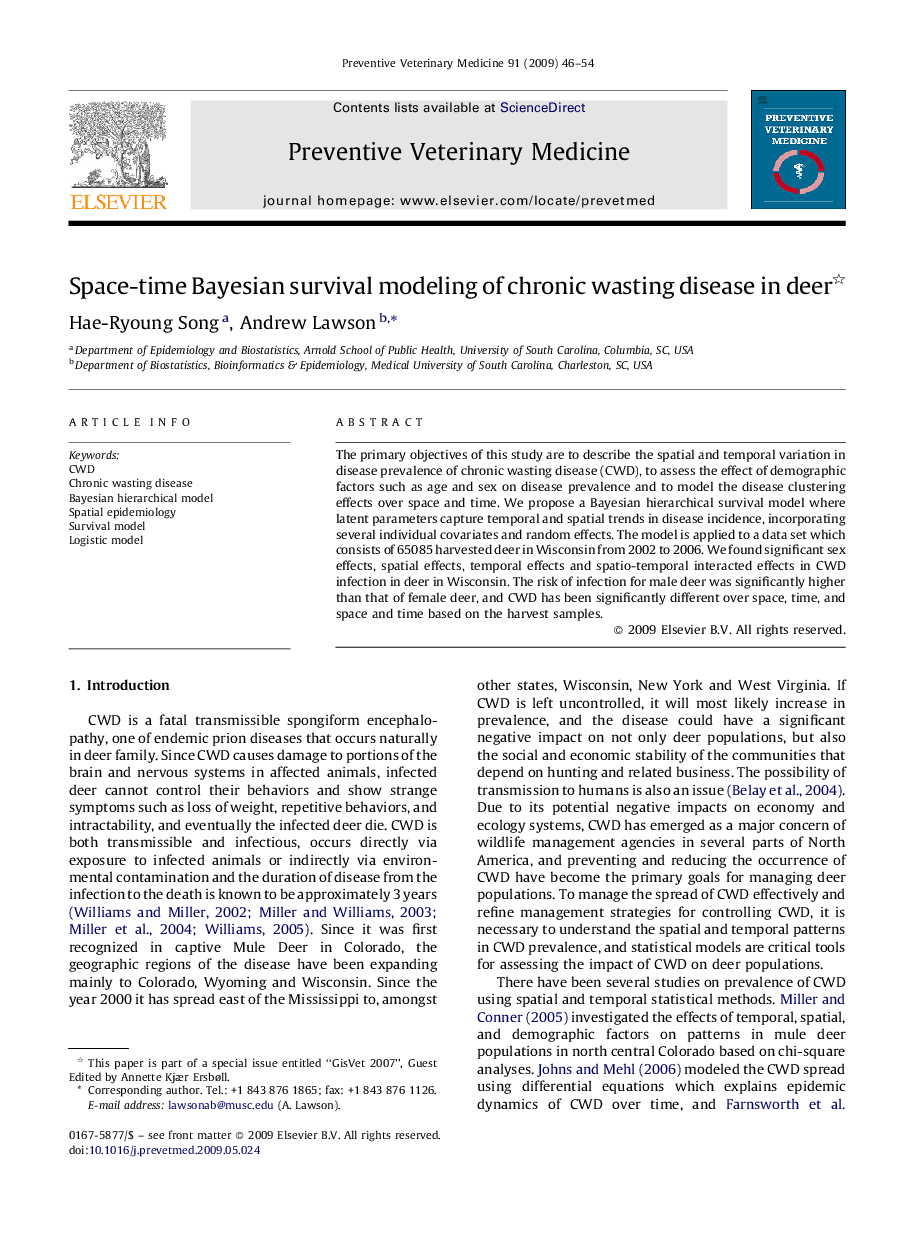| Article ID | Journal | Published Year | Pages | File Type |
|---|---|---|---|---|
| 5794246 | Preventive Veterinary Medicine | 2009 | 9 Pages |
Abstract
The primary objectives of this study are to describe the spatial and temporal variation in disease prevalence of chronic wasting disease (CWD), to assess the effect of demographic factors such as age and sex on disease prevalence and to model the disease clustering effects over space and time. We propose a Bayesian hierarchical survival model where latent parameters capture temporal and spatial trends in disease incidence, incorporating several individual covariates and random effects. The model is applied to a data set which consists of 65085 harvested deer in Wisconsin from 2002 to 2006. We found significant sex effects, spatial effects, temporal effects and spatio-temporal interacted effects in CWD infection in deer in Wisconsin. The risk of infection for male deer was significantly higher than that of female deer, and CWD has been significantly different over space, time, and space and time based on the harvest samples.
Keywords
Related Topics
Life Sciences
Agricultural and Biological Sciences
Animal Science and Zoology
Authors
Hae-Ryoung Song, Andrew Lawson,
